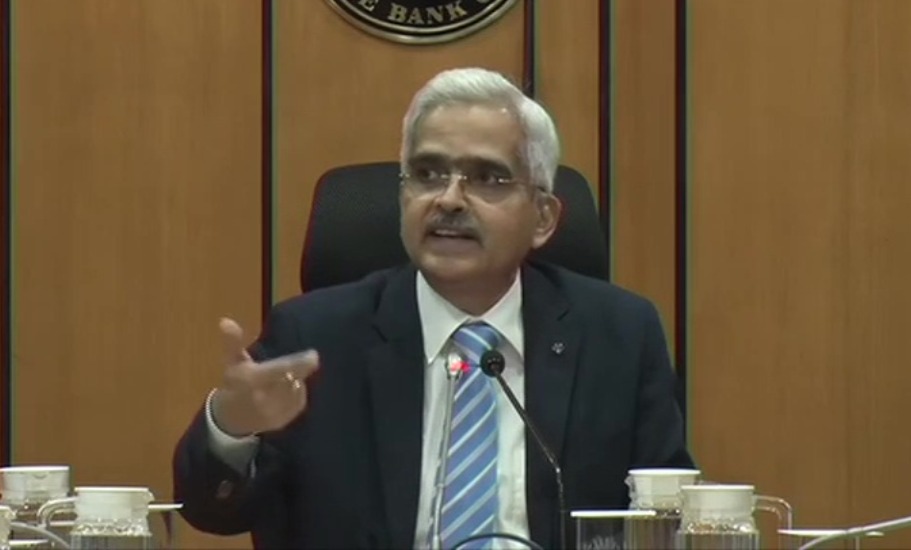
RBI Governor: FY23 inflation likely to remain 6.7%, may fall to 5% early FY24
RBI Governor Shaktikanta Das said the Monetary Policy Committee felt that persistently high inflation needed 'a calibrated withdrawal'; this could mean further rate hikes aren't ruled out

The Reserve Bank of India, which raised the repo rate by 50 basis points to 5.9 per cent on Friday (September 30), observed that over the past two-and-a-half years, the world has witnessed two major shocks – the COVID pandemic and the conflict in Ukraine.
These shocks have produced a profound impact on the global economy, said Governor Shaktikanta Das in a statement. “As if that was not enough, now we are in the midst of a third major shock – a storm – arising from aggressive monetary policy actions and even more aggressive communication from Advanced Economy (AE) central banks,” he noted.
Opinion: Rate rise by sleight of hand: Monetary Policy says bye to easy money
Yet, the Indian economy continues to be resilient, said the Governor. “There is macroeconomic stability. The financial system remains intact, with improved performance parameters. The country has withstood the shocks from COVID and the conflict in Ukraine. Our journey over the last two-and-a-half years, our steely resolve in dealing with the various challenges gives us the confidence to deal with the new storm that we are confronted with.”
Rationale behind rate hike
Explaining the Monetary Policy Committee’s (MPC) rationale behind the repo rate hike, Das said inflation continues to “persist at alarmingly high levels across jurisdictions”.
The US dollar has strengthened rapidly to a two-decade high, he said. “Consumer price inflation remains elevated and above the upper tolerance band of the target due to large adverse supply shocks, some firming up of domestic demand, and the spill-overs from global financial markets,” he further said. “In this backdrop, the MPC was of the view that persistence of high inflation necessitates further calibrated withdrawal of monetary accommodation to restrain broadening of price pressures, anchor inflation expectations and contain the second-round effects.”
“This action will support medium-term growth prospects,” Das added.
Inflation concerns
Das observed that global geopolitical developments are having an impact on domestic inflation. In India, inflation rose to 7 per cent in August from 6.7 per cent in July.
Also read: Shaktikanta Das explains what India’s strong economic fundamentals are in 6 points
“Acute imported inflation pressures felt at the beginning of the financial year have eased but remain elevated across food and energy items,” said Das. “Edible oil price pressures are likely to remain contained on improved supply from key producing countries and measures taken by the Government. Going forward, there could be some tapering of selling price increases on account of easing supply conditions and softening of industrial metal and crude oil prices. With services activity showing strong rebound and some improvement in pricing power, risks of higher pass-through of input costs, however, do remain.”
There are upside risks to food prices and lower sowing has upped price pressures, Das said. “These risks to food inflation will have an adverse impact on inflation expectations,” he added.
Inflation projection is retained at 6.7 per cent for the current year, Das said, adding it is likely to fall to 5 per cent levels by the first quarter of next fiscal year. In the second half of this fiscal year, inflation is likely to remain at 6 per cent, he said.
Monetary policy has to carry forward its calibrated actions consistent with evolving dynamics in the economy, said the Governor. “It must remain alert and nimble.”
Das said the MPC is of the view that persistently high inflation necessitates ‘a calibrated withdrawal’, which means that further rate hikes aren’t ruled out. Inflation continued to be a concern in the economy, Das said.
GDP projections
Das said India’s real GDP grew 13.5 per cent year-on-year in the first quarter of FY23, surpassing the pre-pandemic level by 3.8 per cent. “This was led by robust growth in private consumption and investment demand,” he said.
Also read: FM says ‘complete harmony’ with Reserve Bank of India on cryptos
“While real GDP growth in Q1 of 2022-23 turned out to be lower than our expectations, the late recovery in kharif sowing, the comfortable reservoir levels, improvement in capacity utilisation, buoyant bank credit expansion and government’s continued thrust on capital expenditure are expected to support aggregate demand and output in the second half (H2) of fiscal 2022-23,” he added.

